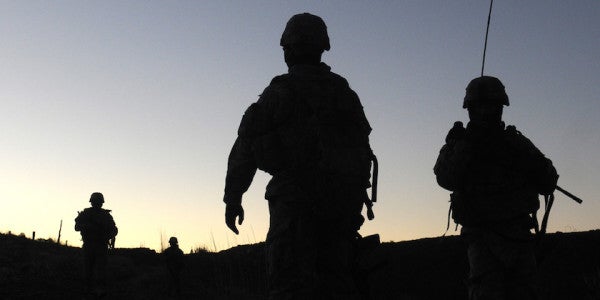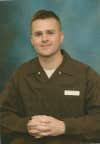Why I Think Lt Clint Lorance Is A Murderer
American soldiers aren't cowards. They don't shoot at everything that moves.

Update: 1st. Lt. Clint Lorance was issued a full pardon by President Donald Trump on Nov. 15, 2019, after serving six years of his 19-year sentence.
For a soldier deployed to a place where suicide bombings are a routine threat, as they were in Kandahar Province, Afghanistan, back in 2010, the sound of an approaching vehicle can be enough to make the hairs on the back of your neck stand up. So when, in the fall of that year, during one of my platoon’s first patrols after we lost three soldiers to a suicide attack, I heard the buzz of an engine and looked up to see a motorcycle bearing down on the rear of our formation, my first instinct was to jump over a nearby wall and cover my head.
As the platoon medic, I usually walked somewhere in the middle of the formation. But on that patrol, for some reason, I was the last man. I’m still surprised I didn’t jump over that wall. It was only about three feet high. Instead, without thinking, I raised my rifle, flipped the selector lever from “safe” to “semi,” and started walking toward the motorcycle. It all happened within seconds. I remember yelling Wodiraga! — the Pashto word for “do not move” — again and again. I remember the pressure of my finger on the trigger. I remember being scared that I’d miss. And I remember the incredible relief I felt when the bike skidded sideways across the dirt road and stopped in a cloud of yellow dust about 30 meters away.
Several days ago, that moment came back to me when a fellow Army veteran emailed me a petition supporting the pardon of 1st Lt. Clint Lorance. I had heard of Lorance’s case but wasn’t familiar with the details. The petition was accompanied by a letter from Allen West, a retired Army lieutenant colonel who served as a member of the U.S. House of Representatives between 2011 and 2013. In the letter, West argues that Lorance, who was convicted of second-degree murder in 2013, is the victim of a miscarriage of justice — an “innocent U.S. soldier” punished for “doing his job.” His crime: ordering his subordinates to fire on three Afghans riding a motorcycle while on patrol in Kandahar in July 2012. My initial thought was, I should sign this petition.

Reading West’s letter, I could picture it. “When the motorcycle started gunning toward the platoon, 1LT Lorance ordered his marksman to fire,” he writes. Surely, I thought, no one on the jury that sentenced Lorance to 20 years in prison understood that on the modern battlefield, everything and everyone is a threat. And I wasn’t alone in that assessment: the scores of politicians, conservative commentators, and veterans have rallied in support of Lorance for the same reason. To his supporters, Lorance is the opposite of a villain. He’s a hero — an uncompromising lieutenant who was willing to do whatever it took to ensure all of his men made it home alive. In 2015, more than 124,000 people signed a petition to the Obama White House demanding a pardon. Obama, who managed to grant clemency to more than 1,700 people during his time in office, declined.
“President Obama refused to pardon an innocent U.S. soldier last month before he left office,” West writes. “But now that Donald Trump has taken office, you and I have a new chance to finally free 1LT Lorance.”
The theory that Lorance is innocent hinges on the belief that the U.S. military’s strict rules of engagement are out of touch with the reality on the ground. The rules, which Gen. David Petraeus tightened to reduce civilian casualties when he assumed command of the International Security Assistance Force in Afghanistan in 2010, are in place to give soldiers pause, to force them to consider if the kill is worth it. In his directive, Petraeus urged soldiers to hold their fire when unsure if a target is a combatant or a civilian, but he made it clear that they had every right to defend themselves: “We must give our troopers the confidence to take all necessary actions when it matters most while understanding the strategic consequences of civilian casualties.”
We’re all familiar with the anecdote: Insurgents fire on Americans, drop their weapons, and run, assuming that they’re fair game only when they’re armed. But through a rifle scope, an insurgent who abandons his rifle in the middle of a firefight is still an insurgent. There are good reasons to pull the trigger. Fear of death is one of them. He could be en route to another gun. So is a sense of duty — as in, If I don’t smoke this dude now, he’ll continue to wreak havoc on my unit and the local population.
I can’t recall a single incident from the last 16 years in which a U.S. service member was convicted of murder for killing an unarmed insurgent in the middle of a firefight. To earn that conviction, you have to go above and beyond.

West’s defense of Lorance continues: “Two of the riders were killed. The other was captured in the village, where days earlier a U.S. soldier was shot in the neck. My friend, those of us who have been stationed in Afghanistan know the tactics and actions of the enemy.”
Lorance, I soon discovered, had been on the ground with his platoon in Afghanistan for only three days when the shooting that landed him in prison occurred. He had replaced another lieutenant, who’d been wounded in a bombing. Lorance, who had previously served in Iraq as an enlisted soldier, was freshly commissioned and 28 years old. Later, in a letter to the general presiding over his court-martial, Lorance admitted that he felt the need to “establish common ground with the battle-hardened troopers of the new platoon.” But many of those troopers, it seems, found their new leader’s eagerness to prove himself unnerving. In an interview with The New York Times, one of Lorance’s subordinates, a staff sergeant who’d served three tours in Afghanistan, described him as being “just so aggressive,” saying, “One of the first things he said to us was, we are going in to go in Gestapo-style with night raids, pull people out of houses, make them afraid of us.”
Reading that interview, I started to lose faith in Lorance. Nine members of his platoon testified against him at his trial. Together, they described a man who arrived in Afghanistan determined to get his hands bloody. Fair enough. Combat soldiers are, by nature, hungry for a fight. As a result, a platoon leader who is willing to loosen the reins a little and allow his subordinates to aggressively pursue the enemy will generally be a pretty popular guy. Which is why I was surprised to discover that not a single soldier from Lorance’s platoon testified on his behalf. Even more surprising is the wide discrepancy between the accounts of the incident provided by the soldiers who testified against Lorance and the narrative he and his supporters — none of whom actually witnessed the shooting — have vehemently pressed since the murder investigation began.

The motorcycle that Lorance ordered his soldiers to shoot at was ridden by three Afghans. According to West’s letter, the bike was “gunning toward the platoon.” One can understand why this would be alarming. The threat of suicide bombers in Kandahar was very real, and motorcycles were often the vehicle of choice in such attacks. Every soldier in Lorance’s platoon would’ve known that. Their brigade, the 4th Brigade Combat Team, 82nd Airborne division, had inherited that specific battle space a year after my brigade left it. My company alone had lost nine soldiers to suicide attacks. Moreover, if a motorcycle is “gunning toward” a platoon of battle-hardened soldiers, an order from a brand new lieutenant isn’t what’s going to bring that motorcycle down. Fear of dying is enough.
So then why did Lorance have to repeatedly ask his soldiers to engage the motorcycle? One possible answer to that question can be found in the testimonies offered by Lorance’s subordinates in court, which placed the motorcycle not only 200 meters away from the platoon, but on the other side of a grape field. The soldiers’ version of what happened next also diverged from Lorance’s. According to their accounts, Lorance told one of his soldiers, Pfc. James Skelton, to fire on the motorcycle. Skelton missed. So Lorance radioed a nearby truck and ordered its gunner to fire on the motorcycle. It did and two of the three Afghans on the motorcycle fell, while the third fled. When the gunner then radioed back to report that a young boy was attempting to retrieve the bodies, Lorance ordered him to shoot again. “I wasn’t going to shoot a 12-year-old boy,” the gunner, Pvt. David Shilo, testified. No weapons were found on the the two dead Afghans. Soldiers in Lorance’s platoon told the court that he had prevented them from conducting a proper battle damage assessment, and that he radioed a false report to his commanders that the bodies had been carried away by villagers before they could be identified.

It can be said that on the modern battlefield everyone is a threat, but American soldiers aren’t cowards. They don’t shoot at everything that moves. But put them in a situation where they’re being shot at or fear that their lives and the lives of their comrades are in mortal danger, and they will unleash hell. Just as important, they will own their kills. It speaks volumes that not a single soldier in Lorance’s platoon — except, perhaps, Lorance himself — wanted to own these.
When people like West and Sean Hannity, who has also been one of Lorance’s most vociferous supporters, declare that Lorance is innocent, they are also leveling an insidious accusation at the nine American soldiers whose testimonies helped put him behind bars. To call Lorance a hero is either to say that those nine men conspired to ruin him, or that a bunch of people who weren’t on the ground that day are better equipped to decipher what happened than those who actually lived it. I simply cannot accept that. Because if anyone knows the “tactics and actions of the enemy” that Lorance claims he was trying to protect his subordinates from, it’s them. And if anyone knows the difference between a clean kill and cold-blooded murder, it’s them. I, for one, have faith in our grunts. I will not sign the petition.
On that day in November, when I found myself in the exact situation Lorance and his supporters describe, I could’ve killed those men on that bike. And had we not found a single weapon on their bodies, or bombs under their shirts, that would’ve been perfectly fine. I know because after the motorcycle came to a halt, everyone in my platoon let out a collective sigh and guys patted me on the back. I know because a few months later, one of our sister platoons, which had also been the target of a devastating suicide attack, was approached by a motorcycle on that same road. This time, despite desperate pleas from both American and Afghan soldiers, the driver didn’t stop. Someone shot him in the chest. The guy turned out to be a local shopkeeper. His death, we all agreed, was justified. Even the Afghan soldiers said so. Nobody was punished. It was just another day in Kandahar.